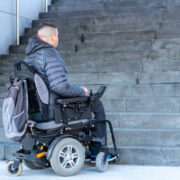
In a world where stress and tension have become constant companions, the search for holistic healing practices has intensified. Among the myriad therapeutic approaches, reflexology massage stands out as a beacon of natural well-being. This ancient practice, rooted in the belief that specific points on the feet correspond to various organs and systems in the body, has gained popularity for its potential to rejuvenate the mind, body, and spirit.
The Origins of Reflexology Massage
Reflexology, also known as zone therapy, has its roots in ancient civilizations, including China and Egypt. The underlying principle is that different zones on the feet, hands, and ears are connected to specific organs and tissues throughout the body. By applying targeted pressure and massage techniques to these zones, practitioners aim to promote overall wellness and restore balance.
The Magic of Pressure Points
At the heart of reflexology massage lies the concept of pressure points. These tiny, sensitive areas on the feet are believed to mirror the body’s internal workings. By skillfully manipulating these points, a reflexologist can stimulate circulation, alleviate tension, and encourage the body’s natural healing processes.
Understanding the Map of the Feet
Each foot serves as a map, with specific zones corresponding to organs such as the heart, lungs, liver, and kidneys. For instance, the ball of the foot mirrors the chest and heart, while the heel corresponds to the lower back and intestines. By meticulously working on these areas, a reflexologist aims to harmonize the entire body, addressing imbalances and promoting a sense of well-being.
Unraveling the Benefits
The therapeutic benefits of reflexology massage extend far beyond mere relaxation. As practitioners apply gentle pressure to specific points, the body responds in remarkable ways. Here are some key advantages:
1. Stress Reduction
In the fast-paced world we inhabit, stress is an inevitable companion. Reflexology massage provides a sanctuary for relaxation, helping to reduce stress and anxiety levels. By targeting stress-related zones on the feet, this practice induces a state of tranquility, promoting mental clarity and emotional balance.
2. Improved Circulation
The circulatory system plays a crucial role in maintaining overall health. Reflexology stimulates blood flow, ensuring that oxygen and nutrients reach every corner of the body. Enhanced circulation not only revitalizes the organs but also supports the body’s natural detoxification processes.
3. Pain Management
For those grappling with chronic pain, reflexology offers a non-invasive and drug-free alternative. By focusing on specific reflex points associated with pain, practitioners aim to alleviate discomfort and promote a sense of relief. This makes reflexology a valuable complementary therapy for individuals dealing with conditions like migraines, arthritis, and back pain.
Conclusion
In the tapestry of holistic healing, reflexology massage emerges as a thread that weaves together ancient wisdom and modern well-being. By recognizing the interconnectedness of the body’s systems and harnessing the power of pressure points, this practice opens a gateway to rejuvenation. From stress reduction to improved circulation and pain management, the benefits of reflexology extend beyond the massage table, echoing in the daily lives of those who embrace its therapeutic touch. So, step onto the path of wellness, where the magic of reflexology awaits to restore balance and vitality, one pressure point at a time.












